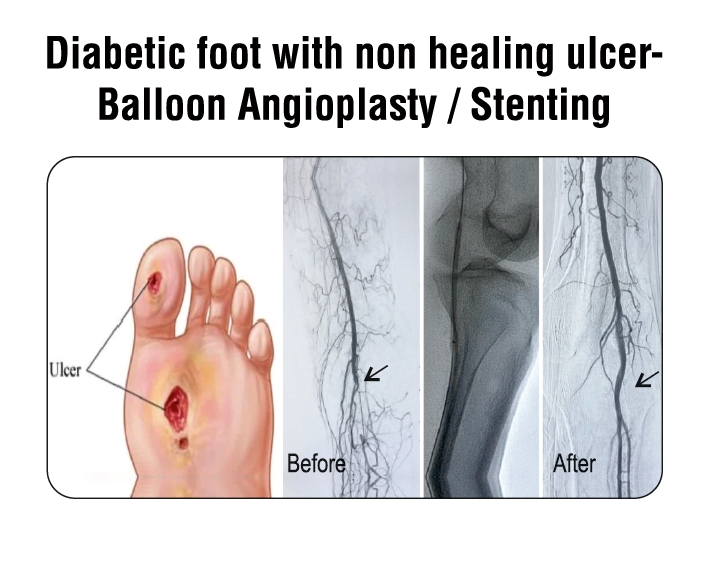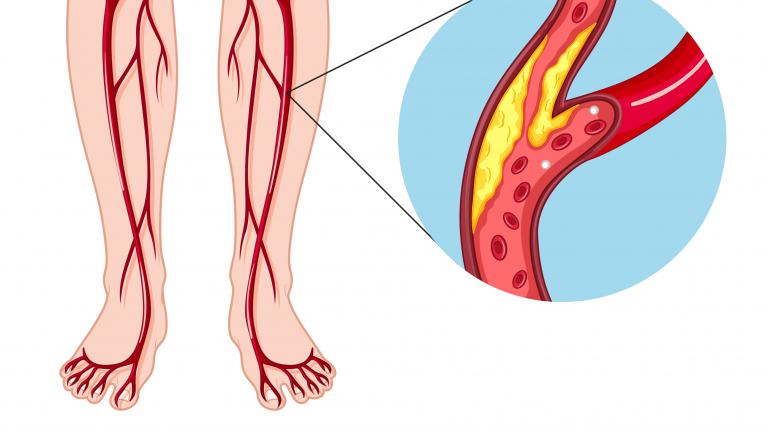Peripheral vascular disease or PVD is a chronic limb ischemia caused by atherosclerosis of the peripheral arteries. Diabetes mellitus is a risk factor for this disease. The most common symptom of PVD is muscle pain in the lower limbs on exercise, weak pulses in the legs and the feet, gangrene, hair loss on legs.
Causes
PVD happens when buildup on the walls of blood vessels causes them to narrow. It commonly affects people with Type 2 Diabetes, who are also prone to high cholesterol, or stroke and heart disease, high blood pressure, are older than 50 years and obesity
Symptoms
- Changes in skin color.
- Changes in skin temperature.
- Swelling in the foot or ankle.
- Pain in the legs.
- Open sores on the feet that are slow to heal or are draining.
When should you consult a doctor?
Visit your doctor if you have Pain or cramping in the arms or legs, especially if it’s more acute with physical activity and goes away with rest. Other underlying symptoms include numbness or weakness in the legs, cramping or pain in one or both of your thighs, hips, or calf muscles, non-healing wounds or sores on the feet, toes, or legs. Ignoring these symptoms and leaving them unchecked can lead to severe complications and may require surgery and amputation.
Our Treatment
We use the most advanced and minimally invasive approaches to treat peripheral vascular disease. We have years of experience in effectively treating and curing diabetic foot or PVD. We mainly use two methods to treat Peripheral Vascular Disease:

- Angioplasty
- Stenting
Angioplasty and Stent placement are two ways that we effectively use to open blocked peripheral arteries.
